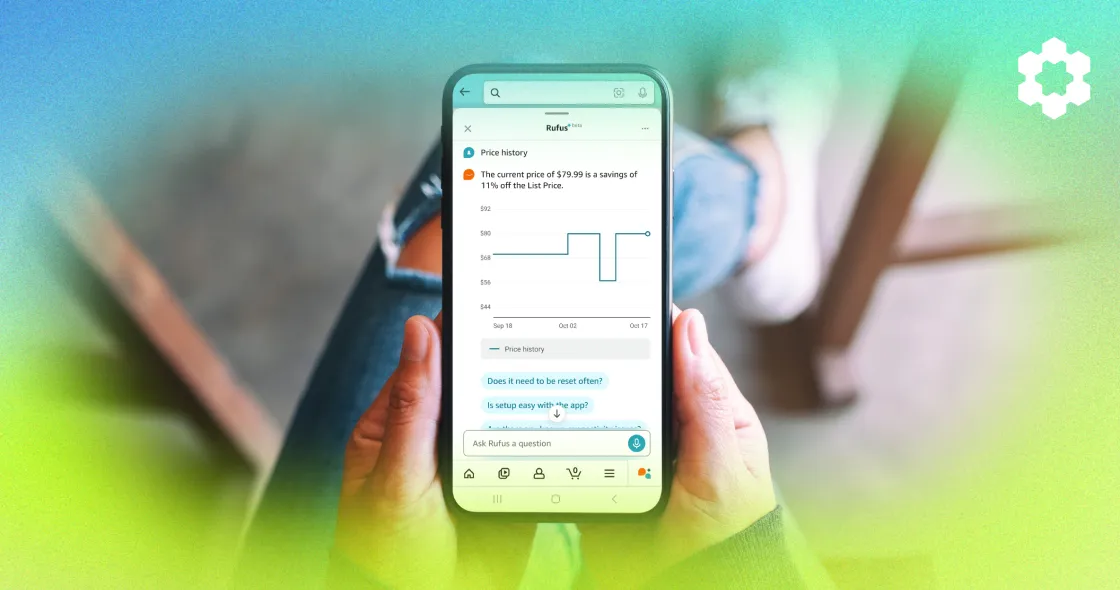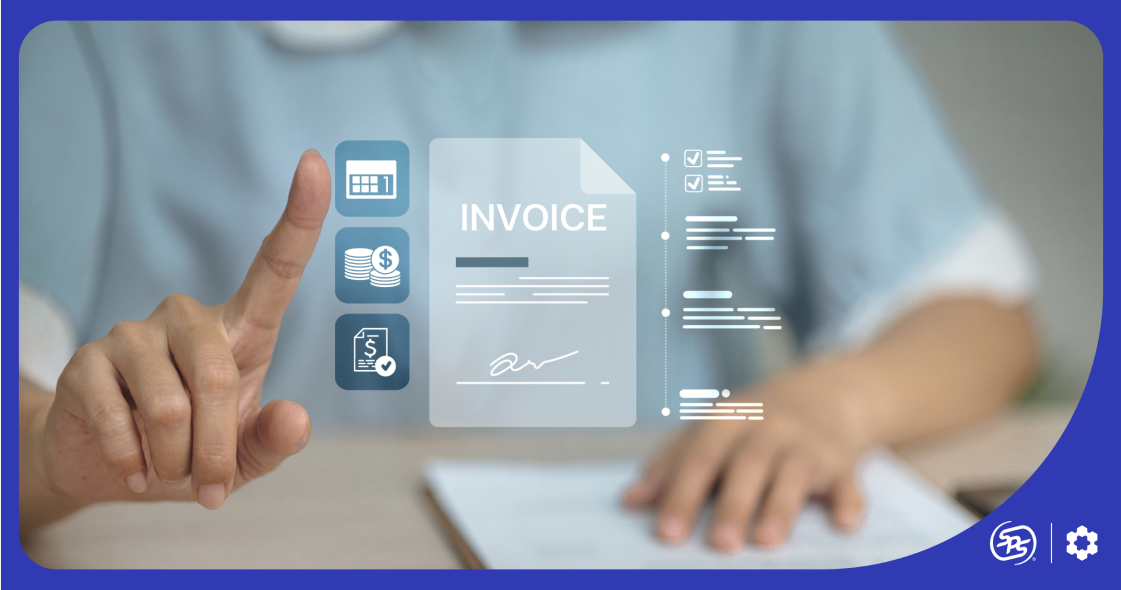This week, Amazon has rolled out a few updates designed to streamline operations for sellers.
First up, Rufus AI now provides select shoppers with price history insights, increasing transparency and potentially boosting conversion rates.
Additionally, sellers can now process seller-fulfilled prepaid returns for large and heavy items through UPS, offering more flexibility in managing returns.
For international sellers, there’s promising news: Amazon Global Selling has reduced SEND rates for shipments from the US to the UK.
Finally, sellers using FBA are encouraged to cover secondary barcodes on their products to help speed up processing times in fulfillment centers.
Read on to see how these Amazon seller updates can enhance your business, from improving logistics to elevating customer service.
1. Amazon’s Rufus AI Introduces Price History Feature
Amazon has taken a major step in enhancing its AI-powered shopping assistant, Rufus, by introducing a new feature that allows select US shoppers to view price history for products directly on the platform. This feature aims to empower consumers with comprehensive pricing information, making their purchasing decisions more informed and transparent.
Key Features of the Price History Update
The updated Rufus AI is designed for user-friendly access. Shoppers can find Rufus via a speech bubble icon on Amazon’s app or website.
By simply tapping Rufus and asking for the “price history,” users receive a line chart showcasing the product’s price fluctuations over the past month. The feature also indicates whether the current price is the lowest in that timeframe, replacing the need for third-party price tracking tools and enhancing the overall shopping experience.
What This Means for Sellers
While this update benefits consumers by providing them with more information, its implications for sellers are nuanced.
Pros
- Increased Transparency: Consumers gain access to price history information, helping them make more informed purchasing decisions and boosting their confidence in buying.
- Competitive Edge for Sellers: Sellers with competitive pricing may attract more customers, as shoppers can easily verify they are getting a good deal compared to historical prices.
- Potential for Increased Sales: Enhanced visibility of pricing can encourage more purchases, as consumers feel reassured by the transparency of pricing trends.
Simplify decision-making with D8aDriven by Carbon6. Automated insights and forecasts help you stay ahead, whether it’s sales, inventory, or marketing.
Cons
- Challenges for Price Fluctuators: Sellers who frequently change prices might face difficulties, as customers could hesitate to buy if they suspect prices may drop further.
- Scrutiny of Promotional Pricing: Sellers using promotional pricing strategies may find their offers under more scrutiny, with customers comparing historical prices to evaluate current deals.
- Risk of Lost Sales: If consumers perceive that they can find better prices elsewhere based on historical data, sellers may experience reduced sales and increased competition.
Overall, Amazon’s integration of price history into Rufus is a bold move that positions the company as a leader in consumer empowerment. While it enhances the shopping experience, sellers will need to adapt their pricing strategies to navigate this new level of transparency.
2. Amazon Offers Seller-Fulfilled Prepaid Returns via UPS for Large and Heavy Items
Beginning November 4, 2024, Amazon will provide UPS prepaid labels for the seller-fulfilled return of large and heavy items.
This update aims to simplify the return process for sellers and customers alike, focusing on packages that meet one or more of the following size and weight criteria:
- Items weighing over 90 pounds;
- Items not exceeding 150 pounds; or
- Items not exceeding certain dimensions, such as 96 inches in length or 130 inches in total length plus girth
This automation of the returns process is designed to reduce A-to-Z Guarantee claims and limit the number of customer inquiries about returns.
Eligible customers making domestic return requests will automatically receive a tracked prepaid return label through Amazon’s Buy Shipping services, ensuring a more efficient and transparent process. UPS will serve as the sole shipping carrier for these large and heavy item returns, handling customer drop-offs directly.
Benefits of the Program
- Time Savings: The automated return process streamlines returns, allowing sellers to save time managing them.
- Reduced Administrative Burden: Sellers can spend less time addressing customer inquiries related to returns, freeing them to focus on other business tasks.
One shortcoming of the program is that it does not cover products above the 150 pound limit or specified dimensions. Sellers will still need to manually provide prepaid return labels within 48 hours of a return request. Handling returns for particularly large items may create extra workload and complexity for sellers managing such inventory.
In sum, Amazon’s introduction of prepaid label returns for large and heavy items through UPS is a step toward simplifying the seller-fulfilled returns process.
However, it’s important to remain mindful of the exceptions for oversized items, which still require manual intervention. By adapting to this new system, you can better manage your inventory, protect your profit margins, and provide a smoother experience for customers.
3. Amazon Global Selling Reduces SEND Rates for US-to-UK Shipments
Amazon has announced a reduction in the Seller Export and Delivery (SEND) rates for shipments from the US to the UK, offering sellers the opportunity to save up to 15% compared to rates from July.
This move is expected to enhance the global selling experience for many sellers by providing more competitive shipping options, thus encouraging cross-border trade.
The Significance of 15% Savings on International Shipping
- Increased Profit Margins: If you previously spent $1,000 on shipping large items, a 15% reduction would save you $150. This savings directly contributes to your margins, allowing you to retain more profit from each sale.
- Competitive Pricing: With lower shipping costs, you can adjust your pricing strategies to remain competitive in the market, passing some of the savings on to customers.
- Cost-Effective Expansion: If looking to expand your reach into international markets, the reduced shipping rates make it more feasible to enter markets like the UK. The savings can offset initial marketing and operational costs, encouraging you to explore new opportunities.
- Improved Cash Flow: By saving on shipping costs, you can reallocate funds to other areas of your business, such as marketing or inventory acquisition. This can be crucial for small businesses that need to manage cash flow tightly.
- Flexibility in Operations: The savings can allow you to invest in other logistics enhancements, such as faster shipping options or better packaging solutions, leading to improved customer satisfaction and repeat business.
- Mitigation of Rising Costs: In a climate where shipping costs can fluctuate due to fuel prices or supply chain disruptions, a 15% reduction provides a buffer against rising logistics expenses, helping you maintain financial stability.
However, while the update presents numerous benefits, you should remain aware of the complexities that international shipping still entails.
Challenges such as fluctuating customs regulations and potential delays due to increased shipping volumes during peak seasons could still impact your operations. So, although rates may be competitive, evaluate whether the costs of international shipping align with your specific business needs and margins.
Take your Seller Central operations off your to-do list with SellerAssist by Carbon6. From inventory management to brand registry and promotions, our team handles it all while you focus on growing your business.
4. Cover Secondary Barcodes on FBA Products for Faster Processing
To enhance the speed and accuracy of product processing, it is highly recommended that FBA UK sellers cover all secondary barcodes on their products.
This includes any visible EAN or UPC codes if you’re using FNSKU labels that start with an “X.” This change is designed to improve the barcode scanning process at Amazon’s fulfillment centers, enabling more efficient automation.
When a product has multiple barcodes, there’s a risk that the scanning system may incorrectly identify one of the secondary barcodes instead of the FNSKU label. This misidentification can lead to processing delays, inventory mismanagement, and potential financial losses for sellers.
For instance, if a product meant for one seller is mistakenly processed under a different seller’s barcode, it can create complications in inventory tracking and fulfillment, ultimately affecting customer satisfaction.
So by ensuring that all secondary barcodes are covered, sellers can help Amazon’s system accurately scan their products, reducing the likelihood of errors and speeding up the fulfillment process. This is particularly beneficial for sellers with high volumes of inventory, as quicker processing times can lead to faster delivery and improved sales performance.
To assist sellers with this transition, Amazon recommends reviewing the FBA product barcode requirements and the FBA Labeling Guide. These resources provide essential guidelines on labeling practices and help sellers avoid potential pitfalls associated with incorrect barcode usage.
In conclusion, while this update may require some initial adjustments for sellers, the long-term benefits of faster processing and reduced errors can lead to a smoother operation.
Actionable Strategies for Success
As Amazon continues to roll out updates, it’s essential to stay informed and adapt to these changes to enhance your business. Here are some actionable steps to help you adjust to the latest changes:
- Leverage Price History Insights: If you’re selling products impacted by the new Rufus AI price history feature, consider adjusting your pricing strategy. Monitor your historical prices and competitors’ pricing to remain competitive, especially if you frequently change prices.
- Utilize UPS for Seller-Fulfilled Returns: Take advantage of the new UPS prepaid labels for seller-fulfilled large and heavy product returns. Familiarize yourself with the criteria for eligibility, and streamline your return processes to minimize administrative burdens.
- Explore International Opportunities: With the reduction in SEND rates for US-to-UK shipments, assess your international selling strategy. Consider adjusting your pricing to increase your competitiveness in overseas markets.
- Cover Secondary Barcodes: Ensure that all secondary barcodes, such as EAN or UPC, are covered on your FBA products if you are using FNSKU labels. This simple adjustment can significantly speed up processing times and reduce errors in fulfillment centers. Regularly review Amazon’s FBA product barcode requirements and the FBA Labeling Guide.
- Stay Updated on Policies and Guidelines: Keeping abreast of Amazon’s policies and resources will help you avoid potential pitfalls and ensure compliance with Amazon’s requirements.
Implementing these steps can not only help you navigate the changes in Amazon’s ecommerce platform with confidence but also transform challenges into opportunities. Additionally, leverage Carbon6 tools to enhance your business strategies, optimize your inventory management, and unlock your full potential.








